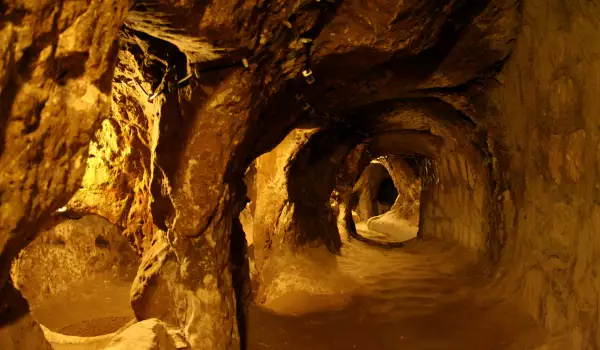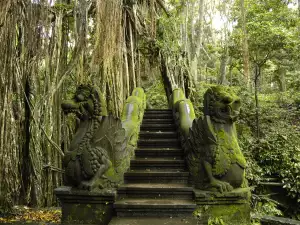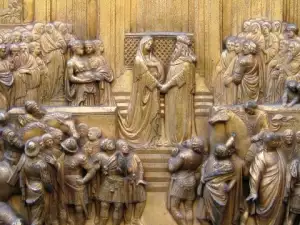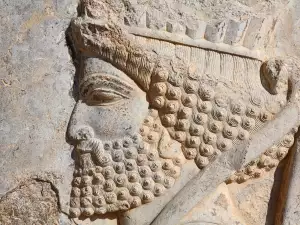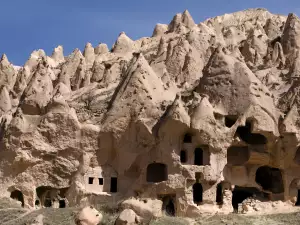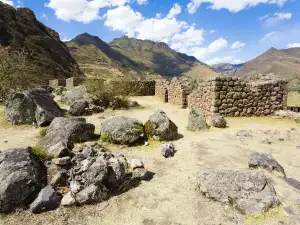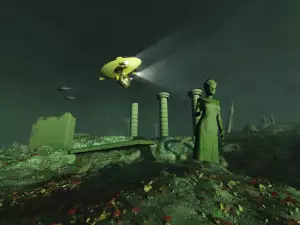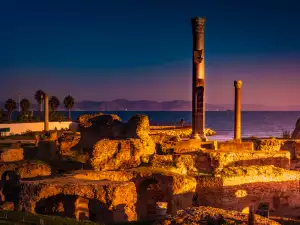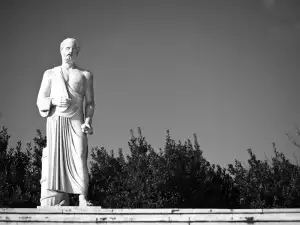Scientists consider the ancient underground city of Nushabad in Iran to be one of the greatest masterpieces of ancient engineering. Thousands of years ago, ancient people dug 18 meters deep into the earth and created a complex city below the surface with extensive corridors, chambers and tunnels where people could live for a long time. They take researchers on a journey back in time to the Sasanian period.
Why was the underground city built thousands of years ago?
Researchers have proposed several theories, ranging from extreme heat waves, to wars and even extremely high levels of radiation and radioactive fallout in ancient times.
Nushabad, which translates as city of delicious cold water, was built after the Sasanian king, passing through this area, stopped to drink water from a well. After drinking, he found the water of the well to be very clean and cold, and ordered a city to be built around the well, which he named Anushabad, which later became Nushabad.
The city is located in a region in the middle of the Iranian desert where harsh weather is not uncommon. Fluctuations in temperature are very large. During the day, people are forced to endure scorching temperatures and at night the cold comes.
Why was Nushabad built?
Did its ancient inhabitants really go through all these hardships to escape the harsh weather? Why didn't they move elsewhere if the weather seemed too extreme? It is not entirely logical that an ancient civilization would go through so much trouble and create an elaborate underground city just to escape the effects of temperature changes.

Other theories suggest that the ancient inhabitants of the city created this underground city, because in the distant past this region was extremely dangerous, so its inhabitants decided to burrow into the ground and create huge tunnels and rooms in which they could hide in hard times. Therefore, hiding underground, the inhabitants could literally move around the city without being noticed from the surface.
The city is extremely well built and its builders have planned everything perfectly. The underground city even has a number of ventilation shafts that provide its inhabitants with fresh air if they decide to stay underground for a long time. Freshwater springs provided them with fresh water and according to the researchers, there is evidence that beneath the surface there were rooms where the inhabitants of the underground city stored food.
Archaeologists exploring the ancient city have discovered a series of elaborate tunnels and corridors, as well as large cavities dug into the walls that served as benches and beds for its inhabitants. This means that the underground city of Nushabad was unusually well planned and provided its inhabitants with protection from the outside world during difficult times.
The depth of the underground city varies from four to eighteen meters.
So far, archaeologists cannot reach a consensus on why and who built this ancient city. One of the most accepted theories suggests that its builders created an underground city to escape war. The Sasanians were the last classical period in the region and it was a very powerful rule that rivaled the Romans. The empire goes through many wars. The last shahanshah, king of kings, named Yazdegerd (632-651), lost to the Islamic invasion after a massive conflict lasting 14 years.
Not surprisingly, during the war, many people sought protection underground and the underground city of Nushabad offers incomparable protection. Most of the entrances to the underground city are extremely small, meaning it would be very difficult for invading armies to sneak into the city by surprise.
However, in addition to the theory of war and extreme temperatures as the reason for the construction of the ancient city, a more controversial theory suggests that in ancient times people sought refuge after the "nuclear" explosions that rocked the region. Due to the fact that this is not the only underground city in existence, many authors and followers of the ancient astronaut theory suggest that ancient people built many underground cities to escape a "nuclear war" that creatures, mistaken for gods, unleashed on the human race.
The ancient city Mohenjo-Daro was destroyed and high levels of radiation were found among its ruins. The buildings melted due to the heat over 1500°C. That is why many authors claim that the ancient underground cities, that we see all over the world are the result of the fact that ancient civilizations were saved from extremely brutal events that happened on our planet thousands of years ago.
